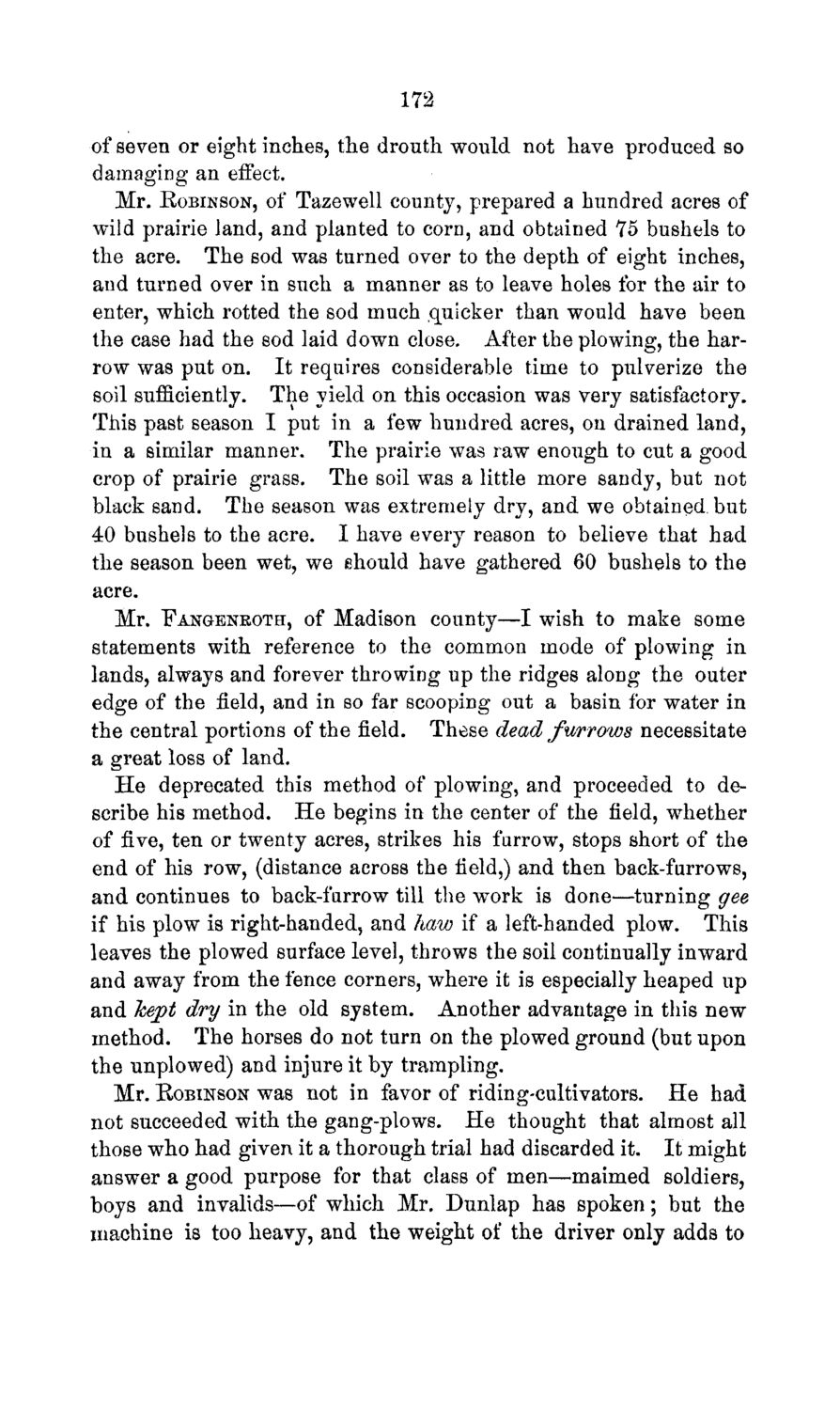| |
| |
Caption: Board of Trustees Minutes - 1869
This is a reduced-resolution page image for fast online browsing.

EXTRACTED TEXT FROM PAGE:
172 of seven or eight inches, the drouth would not have produced so damaging an effect. Mr. ROBINSON, of Tazewell county, prepared a hundred acres of wild prairie land, and planted to corn, and obtained 75 bushels to the acre. The sod was turned over to the depth of eight inches, and turned over in such a manner as to leave holes for the air to enter, which rotted the sod much quicker than would have been the case had the sod laid down close. After the plowing, the harrow was put on. It requires considerable time to pulverize the soil sufficiently. The yield on this occasion was very satisfactory. This past season I put in a few hundred acres, on drained land, in a similar manner. The prairie was raw enough to cut a good crop of prairie grass. The soil was a little more sandy, but not black sand. The season was extremely dry, and we obtained, but 40 bushels to the acre. I have every reason to believe that had the season been wet, we should have gathered 60 bushels to the acre. Mr. FANGENROTH, of Madison county—I wish to make some statements with reference to the common mode of plowing in lands, always and forever throwing up the ridges along the outer edge of the field, and in so far scooping out a basin for water in the central portions of the field. These dead furrows necessitate a great loss of land. He deprecated this method of plowing, and proceeded to describe his method. He begins in the center of the field, whether of five, ten or twenty acres, strikes his furrow, stops short of the end of his row, (distance across the field,) and then back-furrows, and continues to back-furrow till the work is done—turning gee if his plow is right-handed, and haw if a left-handed plow. This leaves the plowed surface level, throws the soil continually inward and away from the fence corners, where it is especially heaped up and kept dry in the old system. Another advantage in this new method. The horses do not turn on the plowed ground (but upon the unplowed) and injure it by trampling. Mr. EOBINSON was not in favor of riding-cultivators. He had not succeeded with the gang-plows. He thought that almost all those who had given it a thorough trial had discarded it. It might answer a good purpose for that class of men—maimed soldiers, boys and invalids—of which Mr. Dunlap has spoken; but the machine is too heavy, and the weight of the driver only adds to
| |